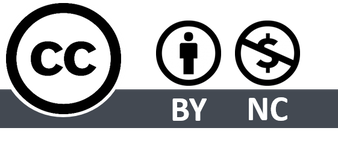Öz
Spectrum is a beautiful word, and so are the abilities of children. Some children come under the continuum of gifted category, some are creative, and some are alike in IQ. Some can sing well, some can dance; some may not speak at all etc. So when there is a spectrum of abilities and disabilities so there should also be spectrum of methods of teaching-learning and assessments. The need is to visualise the process of teaching-learning and assessment as an on-going process that is instrumental how students think and absorb, and what they should pick up based on their thinking ability. In this paper how autistic students should be taught, what they should be presented with, and most importantly how they should be skilled and assessed is been mentioned. Autistic children come under the category of differently abled students; and are abled differently. So they should be treated, educated and assessed based on their specificity in terms of need, requirement, skills, limitations and abilities. Neither normal school curriculum can help them with similar teaching learning methods, or the same old assessment method. They need specific curriculum, teaching learning strategies based on their paucity and specific assessment method hitting to know whether are they able to run their lives, are they able to learn basic skills which may help them.
Anahtar Kelimeler
Kaynakça
- Reference 1 Auluck. (2003, December). Autism: A puzzle with missing pieces.The Times of India. Retrieved, February 25, 2020, from http://uolelibrary.informaticsglobal.com/
- Reference 2. Dilnaz. (2000,April). Autism is still little understood, The Times of India, Retrieved, February 26, 2020, from http://uolelibrary.informaticsglobal.com/
- Reference 3.Horvath, K., & Permam, A. (2002). Autism and gastrointestinal symptoms. Current Science. Jordan, R., & Srinivas, S. (2003, September). Talking autism. The Times of India. Retrieved, February 26, 2020, from http://uolelibrary.informaticsglobal.com/
- Reference 4. Rodier, P. (2000). The Early origins of autism. Scientific American, 282,56-63, Retrieved, Februray 12,202, from httos://jstore.org/stable/10.2307/26058601
- Reference 5. Sharma, U., & Rangarajan, R. (2019). Teaching students with autism spectrum disorder in south asia: a scoping study and recommendations for future. International Journal of Development Disabilities, 65:5,347-358.
- Reference 6.Understanding Autism. (2008, April). The Times of India. Retrieved, February 25, 2020, from http://uolelibrary.informaticsglobal.com/
Öz
Spectrum is a beautiful word, and so are the abilities of children. Some children come under the continuum of gifted category, some are creative, and some are alike in IQ. Some can sing well, some can dance; some may not speak at all etc. So when there is a spectrum of abilities and disabilities so there should also be spectrum of methods of teaching-learning and assessments. The need is to visualise the process of teaching-learning and assessment as an on-going process that is instrumental how students think and absorb, and what they should pick up based on their thinking ability. In this paper how autistic students should be taught, what they should be presented with, and most importantly how they should be skilled and assessed is been mentioned. Autistic children come under the category of differently abled students; and are abled differently. So they should be treated, educated and assessed based on their specificity in terms of need, requirement, skills, limitations and abilities. Neither normal school curriculum can help them with similar teaching learning methods, or the same old assessment method. They need specific curriculum, teaching learning strategies based on their paucity and specific assessment method hitting to know whether are they able to run their lives, are they able to learn basic skills which may help them.
Anahtar Kelimeler
Autistic , teaching learning and assessment, differently abled
Kaynakça
- Reference 1 Auluck. (2003, December). Autism: A puzzle with missing pieces.The Times of India. Retrieved, February 25, 2020, from http://uolelibrary.informaticsglobal.com/
- Reference 2. Dilnaz. (2000,April). Autism is still little understood, The Times of India, Retrieved, February 26, 2020, from http://uolelibrary.informaticsglobal.com/
- Reference 3.Horvath, K., & Permam, A. (2002). Autism and gastrointestinal symptoms. Current Science. Jordan, R., & Srinivas, S. (2003, September). Talking autism. The Times of India. Retrieved, February 26, 2020, from http://uolelibrary.informaticsglobal.com/
- Reference 4. Rodier, P. (2000). The Early origins of autism. Scientific American, 282,56-63, Retrieved, Februray 12,202, from httos://jstore.org/stable/10.2307/26058601
- Reference 5. Sharma, U., & Rangarajan, R. (2019). Teaching students with autism spectrum disorder in south asia: a scoping study and recommendations for future. International Journal of Development Disabilities, 65:5,347-358.
- Reference 6.Understanding Autism. (2008, April). The Times of India. Retrieved, February 25, 2020, from http://uolelibrary.informaticsglobal.com/
Ayrıntılar
| Birincil Dil | İngilizce |
|---|---|
| Bölüm | Makaleler |
| Yazarlar | |
| Yayımlanma Tarihi | 31 Aralık 2022 |
| Gönderilme Tarihi | 9 Ekim 2022 |
| Kabul Tarihi | 16 Kasım 2022 |
| Yayımlandığı Sayı | Yıl 2022 Cilt: 6 Sayı: 11 |

This work licensed under a Creative Commons Attribution-NonCommercial 4.0 International License.
Please click here to contact the publisher.


